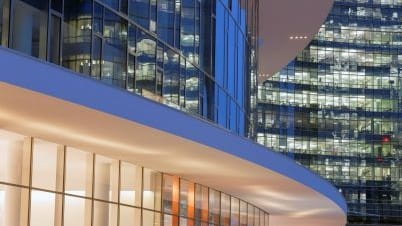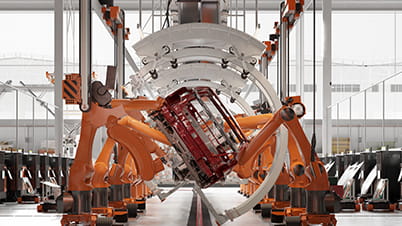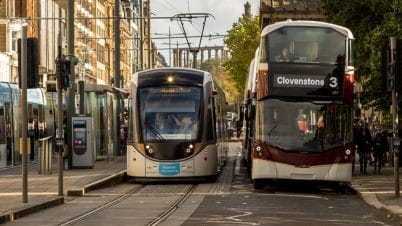Building as a Service expands building evolution with truly intelligent buildings, impacting smart cities and sustainability.

To better understand how we’ve gotten to where we are, let’s take a step back. Just as the industrial revolution has seen evolutions throughout history, so too has the traditional building evolved from a place of refuge and safety, to one that offers creature comforts including heat, electricity, water and sanitation, followed later by a concern for sustainability, and most recently, circa 2010, the advent of the smart building with built-in automation, management and more.
However, what we’re talking about today is more than just your everyday, run-of-the-mill smart building. We’re talking about a new generation of intelligent buildings ready to be operated as a service. Building 5.0 is a pre-requisite to operate a Building as a Service (BaaS). This evolved Building 5.0, equipped, connected, secure and service-oriented building is particularly well-suited to optimising energy efficiency. In addition to managing temperature, lighting and window shades, room-by-room, using multiple sensors, a truly intelligent solution must collect data, analyse it, report it and be able to use the information.
Building 5.0 requires a holistic approach. That means the functions of Building as a Service cannot be developed in silos. It must include lighting, heating and ventilation, automation and it must include occupancy management.
The rise of the remote working trend has created an opportunity for businesses to reduce their physical footprint, and while initially unaccounted for, a reduction in desktop equipment and the operation of that equipment. Communications and collaboration tools such as our Rainbow™ by Alcatel-Lucent Enterprise can be accessed both inside and outside the building, providing employees with the flexibility to manage their day-to-day work. However, the key to efficiency is a communications network solution designed to reduce overall energy consumption.
If we consider the holistic implications of automation, the availability of data to make faster, better decisions, and the impact of remote working, including a reduction in footprint and the amount of network equipment and cabling, the societal effects are significant. Less raw materials consumed means less CO2 emitted, not only during operations, but also during the building's construction and equipment manufacture.
From a connected building to Building 5.0
Connected buildings have a first layer known as the physical layer, this includes cabling, sensors, metres and gateways, Information Technology (IT) networks (for office automation, video surveillance, Internet of Things (IoT), as well as increasingly for building technology) and Operational Technology (OT) networks that control functions such as air conditioning and heating. ALE LAN and Wi-Fi network solutions connect all of the pieces.
The second layer is where the building gets smart. This communication layer can access the digital world with automation functionality including a platform for managing the building, collecting, analysing and using data. ALE offers solutions to manage the building in a Software as a Service (SaaS) cloud model, for network management and for communications between people, connected objects and business applications.
The third layer, known as the application layer, built upon the physical layer and in conjunction with the communication layer takes the building from a connected building to a service-oriented building, or Building 5.0. This evolution includes advanced technical building management platforms with managed or autonomous service offers, collaborative communications solutions, monitoring and alert applications (such as air quality and intrusion, among others). Integrating Building Information Modeling (BIM) with a digital twin capable of monitoring the life of the building after its design and construction is also possible at this third layer.
Flexibility for sustainability
Efficient building network design provides flexibility. When hotels become flats, conference rooms become theatres, or multi-purpose developments that mix activities (such as hotels, shopping centres, leisure, offices and residences), resources are optimised. Building environments that share network infrastructure, segment uses (multi-services) and offer a high level of security and partitioning for each space, reduce the amount of equipment, cables and technical space required, as well as air conditioning and heating equipment. All this has a considerable impact on sustainability when building networks operate 24x7/365, regardless of occupancy.
At ALE, we are focused on technology-enabled sustainability in buildings and cities globally. We are committed to the UN's Sustainable Development Goals (SDGs), and we are in line with the sustainable cities and communities’ theme of the 11th SDG, which targets access to services for all inhabitants.
Building 5.0 not only impacts the immediate building, it also has a much larger environmental reach, but we still have work to do to create real awareness. In addition to energy consumption and space management, Building 5.0 offers people the promise of safety, health, well-being and productivity through digital technology. Providing Key Performance Indicators (KPIs), based on hard fact building data, enabled by Building 5.0, will go a long way to opening minds.
最新文章

The SaaS Advantage for Hotels and Hospitality Communication…
Modern hospitality communications platforms deliver flexibility, cost optimization and exceptional guest experiences.

Your Communications System: A Brake or an Accelerator?
A modernized platform empowers enterprises to optimize operations and drive continuous performance.

Smart Manufacturing Solutions: The Future of Connected Fact…
Smart manufacturing solutions enable connected factories through reliable, intelligent network connectivity that powers automation and efficiency.

Improving Collaboration in Multimodal Transport
Rainbow transforms how companies, staff and passengers operate and connect in public multimodal transport systems.





